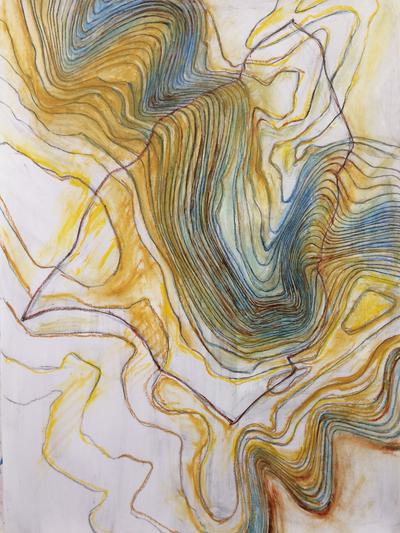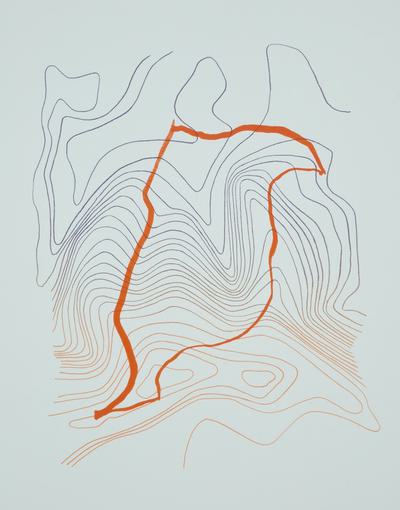Traces of the Technosphere
By
Liz Clifford
2020
Liz Clifford
- Jewellery and Metalwork
- Mixed Media
- Digital and New Media Art
- Film and Video
- Sculpture
- Fossil
- Plaster
- Exhibition
- Studio / Project Space
Dimensions
50 x 181 x 146 cm plus AO print
The work presents a future for the plastic detritus collected by the artist on a 4000 year old track in East Hampshire. 4 x 4 drivers are just the latest users of this Bronze Age route that erode the chalk hill. That chalk is 150 million years old and full of fossils. Trace fossils are not the remains of a species itself, but rather the remains of the trace left by that species. Human artefacts form trace fossils and since the middle of the 20th century have spread over the entire globe, forming a technosphere, the preserved remains of which may be used to help date extinctions, including our own. The plaster slabs presented here contain such “trace fossils,” are supported on a home-made version of the gabion basket, used in flood defences, and are accompanied by an info-graphic that lays out the topography of the landscape and provides location information for the “finds”. The work is also supported by a video. The video and the infographic are attempts to bridge the gap between being in the landscape and the gallery. The video can be screened in the gallery and its sound world is very important. It is about the artist’s daily walk on one level but also aims to link with the message of the technofossil record of humans presented by the plaster slabs and museum style infographic.
“Fossil burning human beings seem intent on making as many new fossils as possible, as fast as possible.” Donna J Haraway. Staying with the Trouble: Making Kin in the Chthulucene. 2016
Liz Clifford
Liz Clifford
Liz Clifford
Helping Artists Keep Going
Axis is an artist-led charity supporting contemporary visual artists with resources, connection, and visibility.






